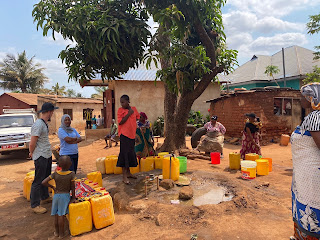Exploring the Water Divide Between Urban and Rural Regions
In the previous study case, we saw that tensions are common between rural and urban populations due to inequalities in access.
Indeed, colonial period Morogoro had limited access to clean drinking water due to its remote location and the focus of the colonial authorities on providing resources for the dominant colonial powers. Lots of the existing infrastructure for providing clean water were developed during the colonial era and were largely focused on urban areas. Colonialism, more generally, created unsustainable and unproductive patterns of economic growth and development.
The emphasis during British-administered was “on surplus extraction with little or no emphasis on developing productive forces”. Given the function as primary commodity provider, we might envisage the long-term consequences of 'underdevelopment'. It is difficult to transform these patterns considering the importance of the agriculture sector which accounts for 30% of the GDP and employs three quarter of the population. This gives strong incentives to the government to favour water access to agriculture. Indeed, agriculture consumes 89% of freshwater in Tanzania. Still, infrastructures for water have improved since independence, the Tanzanian government put an emphasis on developing and modernising its water infrastructure. In recent years, investments such as new wells and storage facilities were directed in rural areas.
This situation is not only witnessed in Tanzania. In most countries worldwide, urban regions suffer from poorer access to safely managed water. In addition to historical factors, resources, infrastructures networks and technology explain why urban regions have greater water accessibility than rural ones (lacking financial resources to invest in water systems).
You can check that here and compare the level of water accessibility by countries, over time, and with a comparison between rural and urban regions. Services range from surface water (river, canal, etc.), unimproved (unprotected dug well or spring), limited (improved source – safer by nature – collection time over 30 min for roundtrip), basic (improved, collection time under 30 min), and safely managed (accessible on premises, available when needed, free from contamination).

Comments
Post a Comment